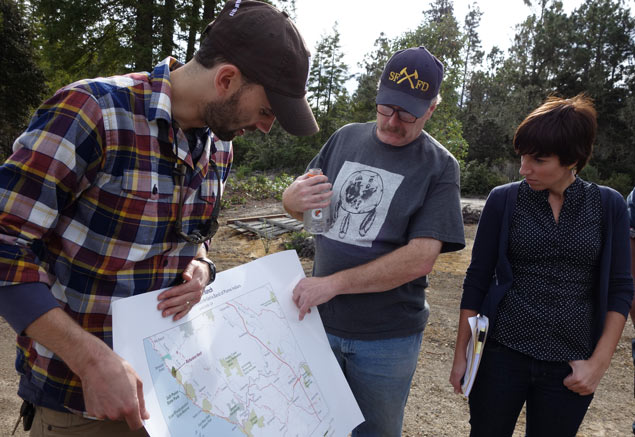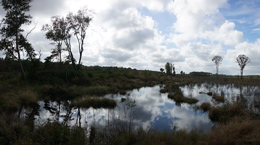 |
Nicole Bartlett (MPP ’98), North Atlantic Regional Coordinator, National Oceanic and Atmospheric Administration
Serves as one of eight regional coordinators at NOAA, America’s “environmental intelligence agency,” where she translates NOAA science for agency collaborators, Congressional staff, state and local government leaders, non-governmental organizations, and engaged citizens. Recently helped establish new habitat focus areas in the Choptank River (Maryland, Delaware) and Penobscot River (Maine) watersheds, where NOAA will concentrate resources to catalyze significant habitat improvements. The goal: to enhance the sustainability of aquatic and coastal communities in the North Atlantic.
Matthew Bishop (MPP/SNRE ’17), 2015 Dow Sustainability Fellow
Conducting a comparative study of state-level public land stewardship models, including public-private partnerships established for the stewardship of nature preserves.
Hannah Clark (BA ’10), Executive Director, Washington Association of Land Trusts
Leads policy, advocacy, and coordinated communications initiatives for the Washington Association of Land Trusts, a coalition of 27 regional land trusts working together to permanently protect the state’s lands and waters through voluntary, cooperative action.
 |
Kate Hackett (MPP ’99), Executive Director, Delaware Wild Lands, Inc.
Restoring the 10,500-acre Great Cypress Swamp—the largest freshwater wetland, the largest block of contiguous forest, and one of the most important resting sites for migratory birds—on the Delmarva Peninsula. “The forest had been degraded over hundreds of years,” explains Kate Hackett. “The swamp was drained for agricultural purposes, and most of the valuable tree species were harvested. We’re now going back to thin out the pine plantations, reintroduce forest diversity, and plant tens of thousands of historically prolific trees like the Bald Cypress and Atlantic White Cedar. And we’re plugging the drainage ditches to restore the wetland characteristics of the swamp.” Hackett reports that the few Bald Cypress trees that survived the ecological degradation have just this year begun to regenerate independently, because habitat is once again conducive.
Benjamin Johnson (MPP/MS ’12), Acting Organization Development Team Lead, Integrated Resources Enterprise Unit, U.S. Forest Service, Portland, Oregon
Exploring how the U.S. Forest Service has provided outdoor experiences for citizens in the past with the goal of crafting a national strategy to better connect with the American public.
 |
Carl P. Simon, Professor of Mathematics, Complex Systems, and Public Policy, Ford School
Uses complex systems methodologies to illuminate ecological processes, including recent work with Courtney Murdock (UGa) that reveals the dynamics of avian malaria contagion in the Rocky Mountains. The work allows ecologists to better understand how changes in climate will impact bird reproduction in the years ahead. “In Hawaii, there are almost no native birds left,” says Carl Simon. “In the continental U.S. birds aren’t dying of malaria, but they’re getting sick and that’s reducing their reproductive success.” Black flies are the carriers of malaria in the Rockies and have a pretty restricted temperature tolerance. But with anticipated temperature shifts from climate change, Simon and Murdock believe black flies will have longer reproduction periods, leading to greater rates of infection and diminished reproductive success for native birds.
Email [email protected] to share energy and environmental policy stories for our expanded online roundup.
Below is a formatted version of this article from State & Hill, the magazine of the Ford School. View the entire Spring 2015 State & Hill here.
